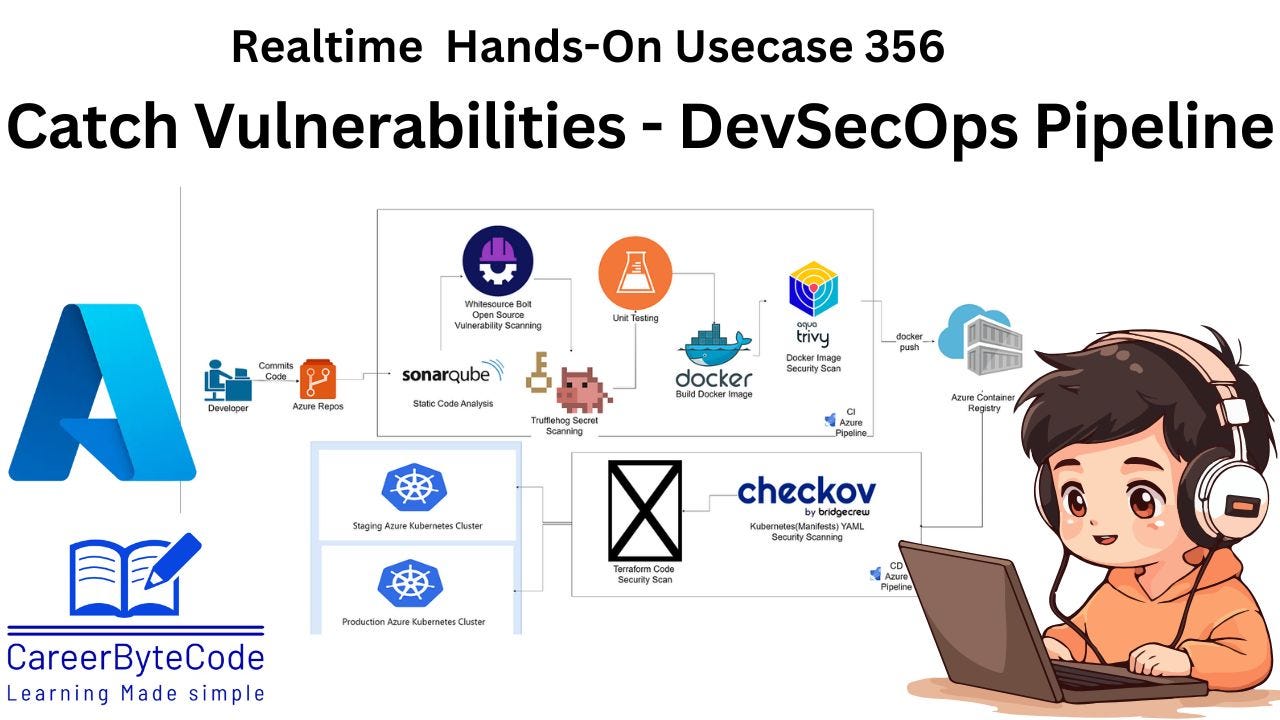Securing CI/CD: Implementing a DevSecOps Pipeline in Azure DevOps
A DevSecOps pipeline integrates security into CI/CD pipelines, ensuring that security practices are automated and continuously applied.
1. Why We Need This Use Case
With the growing adoption of cloud and microservices architectures, security has become a major concern in the software development lifecycle (SDLC). Traditional security approaches often treat security as a separate phase, leading to vulnerabilities being detected too late in the process.
A DevSecOps pipeline integrates security into CI/CD pipelines, ensuring that security practices are automated and continuously applied. This use case demonstrates how to implement a DevSecOps pipeline using Azure DevOps, where security scanning tools are embedded into the pipeline to detect vulnerabilities early in the development cycle.
By implementing DevSecOps, organizations can:
Shift security left in the development cycle, reducing security risks.
Automate vulnerability scanning to ensure compliance with security policies.
Minimize production incidents by detecting security issues in earlier stages.
Reduce cost and time spent on fixing security vulnerabilities post-deployment.
2. When We Need This Use Case
We need a DevSecOps pipeline in Azure DevOps in the following scenarios:
Developing Cloud-Native Applications – When building applications in Azure Kubernetes Service (AKS), Azure Functions, or App Services, integrating security testing in CI/CD pipelines ensures secure deployment.
Regulatory Compliance – Organizations handling sensitive data (finance, healthcare) need automated security testing to meet compliance standards like ISO 27001, GDPR, and HIPAA.
Microservices and Containerized Workloads – When using Docker and Kubernetes, scanning for vulnerabilities in container images ensures that production environments are secure.
Preventing Supply Chain Attacks – When dealing with open-source dependencies, SCA (Software Composition Analysis) tools help detect vulnerabilities in third-party libraries.
Reducing Security Risks in Agile Development – In fast-paced CI/CD environments, automated security testing helps prevent deployment of vulnerable code.



